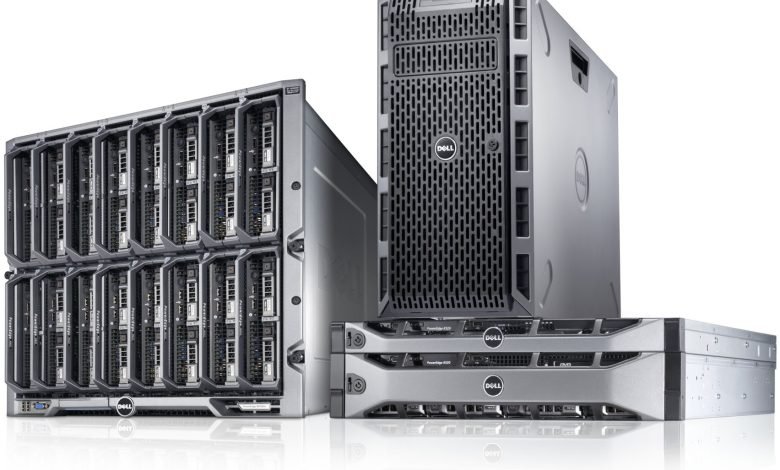
Introduction to the Dell PowerEdge 1950
The Dell PowerEdge 1950 is a server that was first introduced by Dell in 2006. It was designed for use in small and medium-sized businesses and was a popular choice for its combination of affordability and performance.
The PowerEdge 1950 is a 1U rack-mounted server that can support up to two quad-core Intel Xeon processors, up to 32GB of DDR2 memory, and up to four SAS or SATA hard drives. It also includes dual-embedded Gigabit Ethernet controllers and optional redundant power supplies.
The server was designed with a focus on high availability and scalability, making it an ideal choice for businesses that require a reliable and scalable infrastructure. It can be used for a wide range of applications, including web hosting, database management, and virtualization.
While the PowerEdge 1950 is now considered an older model, it remains a popular choice for those in need of a cost-effective server solution for their small or medium-sized business.
Features of Dell PowerEdge 1950
The Dell PowerEdge 1950 is a versatile server that comes with a range of features to support various business needs.
Processor:
It can support up to two quad-core Intel Xeon processors that provide high-performance computing power.
Memory:
The server can support up to 32GB of DDR2 memory, which is ideal for memory-intensive applications.
Storage:
It can accommodate up to four 2.5-inch SAS or SATA hard drives, providing ample storage space for critical business data.
RAID:
The PowerEdge 1950 supports RAID 0, 1, 5, 10, and 50 for data redundancy and protection.
Networking:
The server comes with dual-embedded Gigabit Ethernet controllers for high-speed networking.
Redundancy:
It also includes optional redundant power supplies, allowing for increased uptime and availability.
Management:
The PowerEdge 1950 comes with Dell’s OpenManage software, providing remote management capabilities to easily monitor and manage the server.
Virtualization:
It supports virtualization technologies such as VMware and Hyper-V, making it ideal for virtualization workloads.
Operating systems:
It is certified to run a range of operating systems, including Windows Server, Red Hat Enterprise Linux, and VMware ESXi.
Scalability:
With its high-performance computing power and memory capacity, the PowerEdge 1950 can easily scale to meet the growing needs of a business.
Hardware specifications and configurations
Here are the hardware specifications and configurations for the Dell PowerEdge 1950 server:
Processor:
The server supports up to two quad-core Intel Xeon processors, including the Intel Xeon 5100, 5300, and 5400 series processors. These processors provide high-performance computing power.
Memory:
The PowerEdge 1950 can support up to 32GB of DDR2 memory, with a maximum of eight DIMM slots.
Storage:
The server can accommodate up to four 2.5-inch SAS or SATA hard drives, with a maximum storage capacity of 4TB.
RAID:
The PowerEdge 1950 supports RAID 0, 1, 5, 10, and 50, providing data redundancy and protection.
Networking:
The server includes dual embedded Gigabit Ethernet controllers for high-speed networking.
Expansion slots:
The PowerEdge 1950 has two PCIe expansion slots, allowing for additional add-on cards such as network interface cards or storage controllers.
Power supplies:
The server comes with either a single or dual redundant power supply unit, depending on the configuration.
Operating systems:
It is certified to run a range of operating systems, including Windows Server, Red Hat Enterprise Linux, and VMware ESXi.
Form factor:
The PowerEdge 1950 is a 1U rack-mounted server, making it ideal for data centers with limited space.
Overall, the Dell PowerEdge 1950 provides a robust hardware configuration that is designed for high-performance computing, data storage, and networking.
Management and Maintenance Tips
Proper management and maintenance of the Dell PowerEdge 1950 server can help ensure optimal performance and longevity. Here are some tips to help with server management and maintenance:
Regular updates:
Keep the server up to date with the latest firmware and software updates to ensure that it runs smoothly and securely.
Remote management:
Use Dell’s OpenManage software to remotely monitor and manage the server, which can help reduce downtime and increase uptime.
Backup and recovery:
Implement a regular backup and recovery plan to protect critical data in case of a system failure or data loss.
Monitoring:
Monitor the server’s performance, including CPU usage, memory usage, and storage capacity, to identify and troubleshoot issues before they become major problems.
Cooling:
Ensure that the server’s cooling system is functioning properly, as overheating can cause performance issues and even hardware failure.
Physical maintenance:
Regularly clean and inspect the server to ensure that it is free of dust and debris and that all components are functioning properly.
Security:
Implement security measures such as firewalls, antivirus software, and access controls to protect the server and its data from unauthorized access and cyber threats.
By following these management and maintenance tips, businesses can help ensure that their Dell PowerEdge 1950 servers remain reliable, secure, and high-performing.
Also Read:- Guide to choosing the perfect armchair
Conclusion
In conclusion, the Dell PowerEdge 1950 is a versatile and reliable service that can provide high-performance computing, storage, and networking capabilities to small and medium-sized businesses. With its support for multiple processors, large memory capacity, and expandable storage, it can easily scale to meet the growing needs of a business. Additionally, with features such as RAID support, dual embedded Gigabit Ethernet controllers, and optional redundant power supplies, the PowerEdge 1950 provides high availability and reliability for critical business applications. Proper management and maintenance, including regular updates, remote management, backup and recovery, monitoring, cooling, physical maintenance, and security, can help ensure optimal performance and longevity for the server. Overall, the Dell PowerEdge 1950 remains a popular choice for businesses in need of a cost-effective and scalable server solution.




